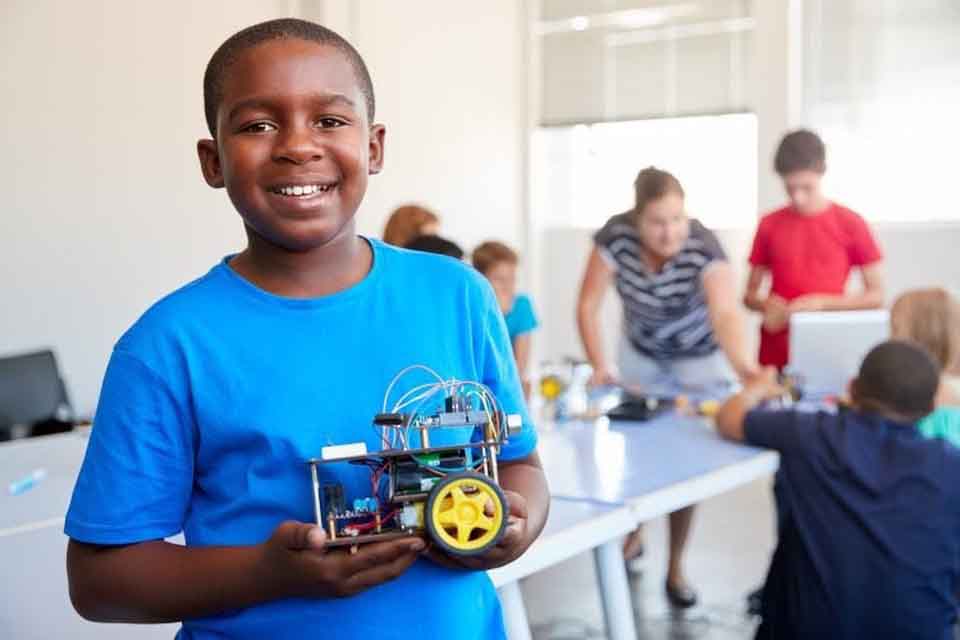STEM Education for Kids: A Pathway to Future Success
Introduction: What is STEM Education?
STEM education—which stands for Science, Technology, Engineering, and Mathematics—is a comprehensive approach to learning that integrates these critical subjects to help children develop essential skills. The primary goal of STEM education for kids is to encourage curiosity, critical thinking, and problem-solving abilities in young learners.
In today’s rapidly evolving world, STEM education is more important than ever. It not only helps children understand the world around them but also prepares them for future careers in an increasingly tech-driven society. Let’s explore why STEM education is crucial for kids and how it can shape their future.

1. Why is STEM Education Important for Kids?
STEM education provides children with the tools they need to succeed in the modern world. Here are some key reasons why STEM education is essential for kids:
-
Develops Critical Thinking: By engaging with STEM subjects, children learn how to approach problems from different angles, enhancing their analytical and logical thinking skills.
-
Fosters Innovation and Creativity: Through hands-on activities like building robots or conducting experiments, kids learn to think creatively and find innovative solutions to complex challenges.
-
Prepares for Future Careers: In an increasingly digital world, STEM fields are at the forefront of job opportunities. By learning STEM skills early on, kids gain a competitive edge in fields like engineering, technology, and data science.
By introducing kids to STEM education at a young age, we are preparing them for a world of possibilities, ensuring they have the skills needed for the future.
2. How Does STEM Education Engage Kids?
STEM education isn’t just about textbooks and lectures. It’s about hands-on, interactive learning that engages children in real-world applications of science, technology, engineering, and math. Here’s how it captures kids’ interest:
-
Project-Based Learning: Kids work on projects that combine different STEM disciplines, such as creating simple machines or building small structures, making learning active and fun.
-
Interactive Technologies: Many STEM programs incorporate virtual learning tools, coding apps, and robotics kits that allow kids to experiment and learn by doing.
-
Collaboration: STEM education often involves teamwork, where children collaborate to solve problems. This helps them develop communication skills and the ability to work well with others.
STEM education fosters an environment where kids actively participate, experiment, and explore new ideas, which helps to solidify their learning.

3. Benefits of STEM Education for Kids
The advantages of STEM education for children go far beyond just academic success. Here’s how it benefits young learners:
-
Improves Problem-Solving Skills: STEM projects often require children to think critically and solve problems step by step. This enhances their ability to tackle challenges both in and outside of the classroom.
-
Encourages a Growth Mindset: In STEM education, failure is seen as part of the learning process. Kids learn to embrace challenges, persevere through setbacks, and develop a growth mindset.
-
Increases Interest in STEM Careers: By introducing kids to STEM concepts early, they are more likely to pursue careers in engineering, technology, mathematics, or science fields later in life.
Through these experiences, children not only gain knowledge but also develop essential skills that will serve them for years to come.
4. STEM Education and Gender Equality
Historically, STEM fields have been male-dominated, but today, we are seeing a shift toward greater gender equality in STEM. Introducing young girls to STEM education early on is crucial in breaking down these barriers and encouraging more female participation in these fields.
-
Hands-On Learning: Activities like coding, building models, and exploring scientific concepts can spark an interest in STEM subjects for girls.
-
Role Models: By showcasing female scientists, engineers, and innovators, we can inspire young girls to pursue careers in STEM.
-
Empowering Girls: Exposure to STEM education helps girls build confidence and see that they are just as capable as boys in pursuing careers in these fields.
By encouraging all children, regardless of gender, to engage with STEM education, we can create a more inclusive and diverse workforce for the future.
5. Practical Ways to Introduce STEM Education at Home
You don’t have to wait for school to introduce your child to STEM education. There are many fun and easy ways to incorporate STEM activities into everyday life at home:
-
Build a DIY Science Kit: Gather household items and challenge your child to create simple experiments like making a volcano or exploring the properties of water.
-
Play STEM-Focused Games: Many board games and apps are designed to teach kids basic coding and mathematical concepts in a fun and engaging way.
-
Encourage Creative Problem-Solving: Present your child with real-world problems and encourage them to come up with innovative solutions using the skills they’ve learned.
By making STEM education a part of daily life, you help your child develop a natural curiosity for learning and problem-solving.

6. STEM Toys: A Fun Way to Learn
STEM toys are designed to make learning fun and interactive. These toys promote hands-on learning while introducing kids to important STEM concepts. Here are some popular STEM toys for kids:
-
Building Blocks: Toys like LEGO encourage kids to use their creativity to design structures while learning about engineering principles.
-
Coding Robots: Toys like Kibo and Botley allow kids to learn basic coding concepts by programming robots to complete tasks.
-
STEM Puzzles and Games: Games like Rush Hour and Math Dice engage kids in critical thinking and problem-solving in a fun, competitive way.
These toys make STEM learning enjoyable and accessible, helping children build essential skills while having fun.
7. Overcoming Challenges in STEM Education
While the benefits of STEM education are clear, there are challenges to overcome, especially in terms of accessibility and resources. Many schools may lack the proper tools or funding to offer a comprehensive STEM curriculum.
-
Lack of Resources: Not all schools have the budget for advanced STEM tools, but there are plenty of low-cost STEM activities that can be done with everyday materials.
-
Teacher Training: Effective STEM education requires trained educators who are knowledgeable in science, technology, engineering, and math. Investing in professional development for teachers is key to delivering quality STEM education.
-
Parental Support: Parents play a crucial role in supporting STEM education by encouraging curiosity and providing resources at home.
Addressing these challenges will ensure that STEM education remains accessible and effective for all children.
8. FAQs: STEM Education for Kids
Q1: At what age should kids start STEM education?
A1: Children can begin exploring STEM concepts as early as preschool. Simple activities like building blocks, sorting shapes, and basic science experiments can help lay the foundation for more complex learning later on.
Q2: How can STEM education benefit kids beyond academics?
A2: STEM education promotes critical thinking, creativity, and problem-solving skills, which are essential for success in everyday life. It also teaches collaboration and communication skills as children work on group projects.
Q3: Are there any online resources for STEM education?
A3: Yes, there are many websites and apps dedicated to STEM education. Websites like Khan Academy, TinkerCad, and Scratch offer interactive lessons in subjects like coding, science, and math.
Conclusion: A Future Fueled by STEM Education
STEM education is no longer a luxury—it is a necessity. By introducing children to STEM concepts early in life, we are equipping them with the skills they need to navigate and succeed in the modern world. Whether through hands-on activities, educational toys, or engaging lessons, STEM education can ignite a lifelong passion for learning and problem-solving.

Investing in STEM education today ensures that our children are prepared for the challenges and opportunities of tomorrow’s world. So, let’s inspire the next generation of innovators, scientists, engineers, and thinkers—one STEM lesson at a time!









